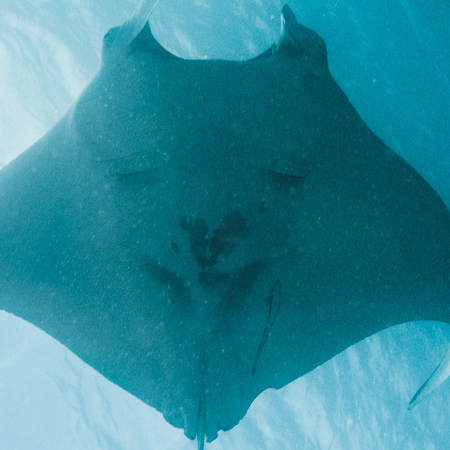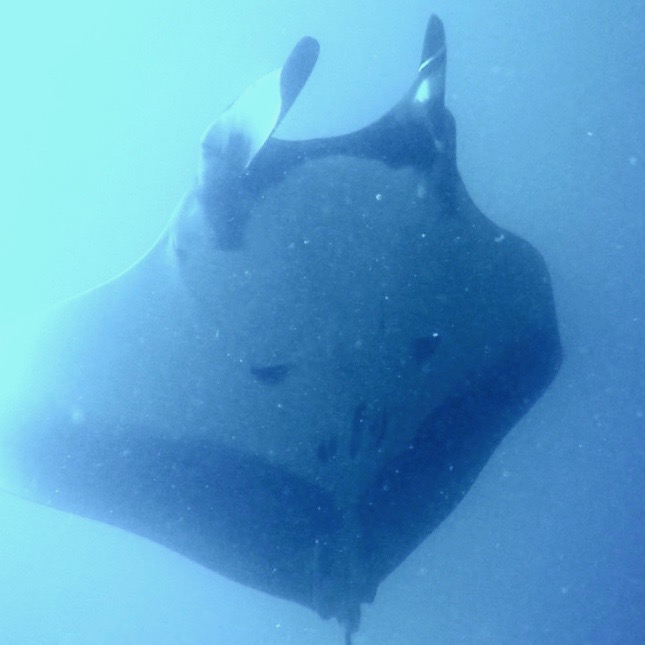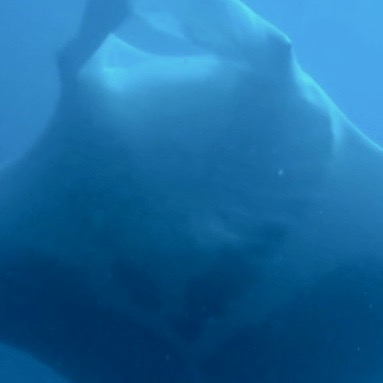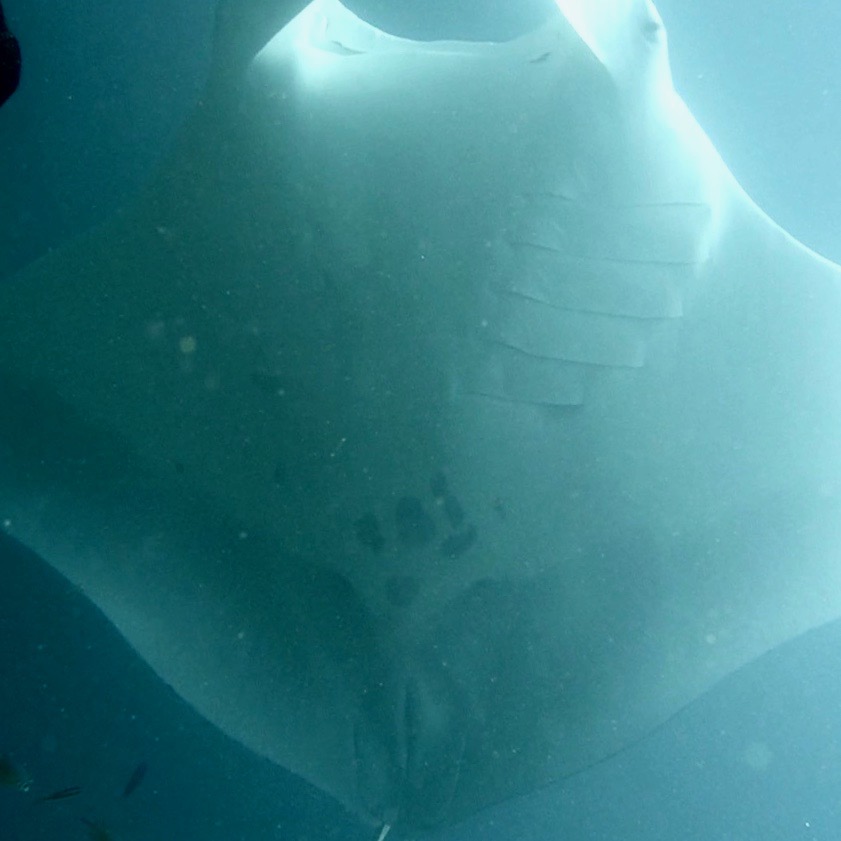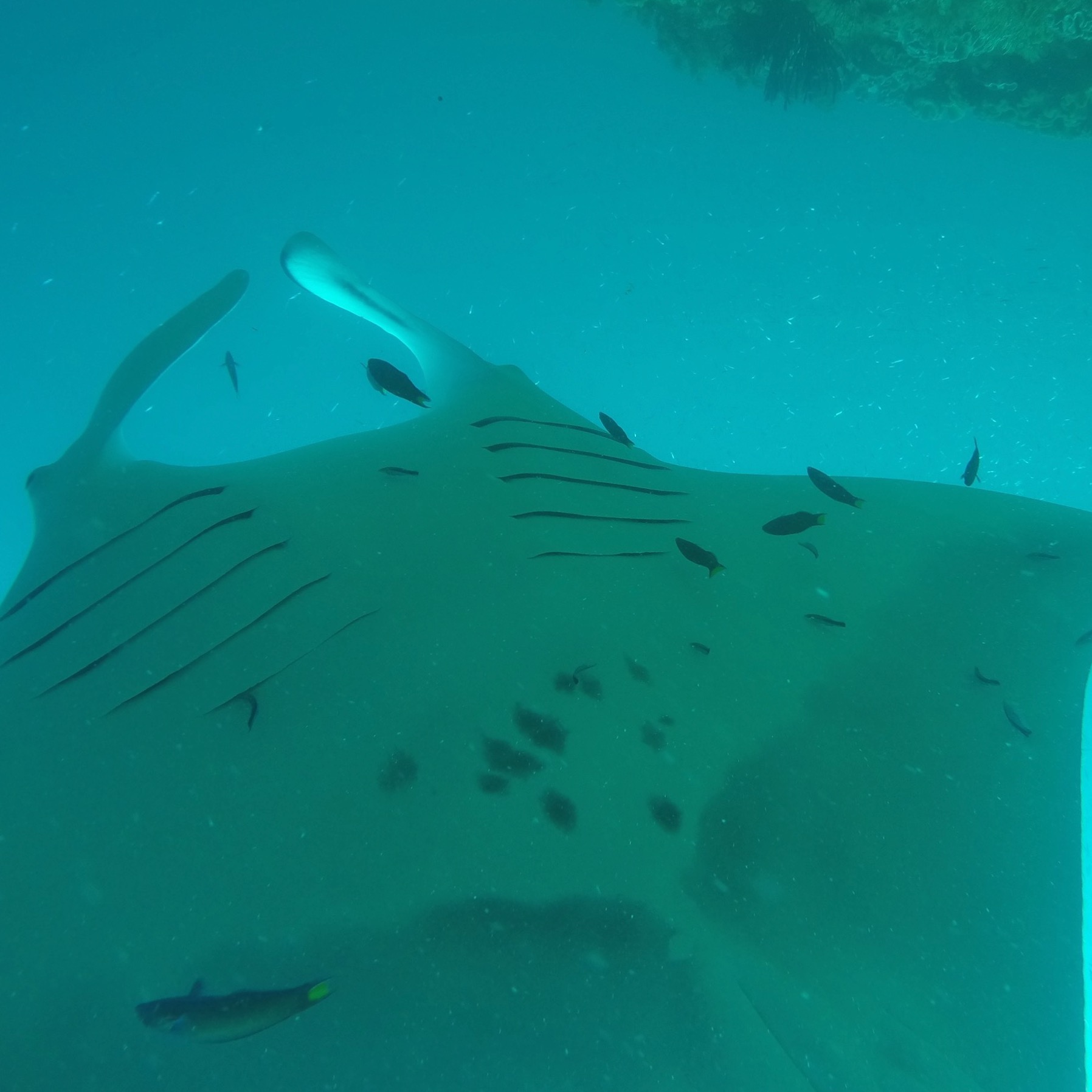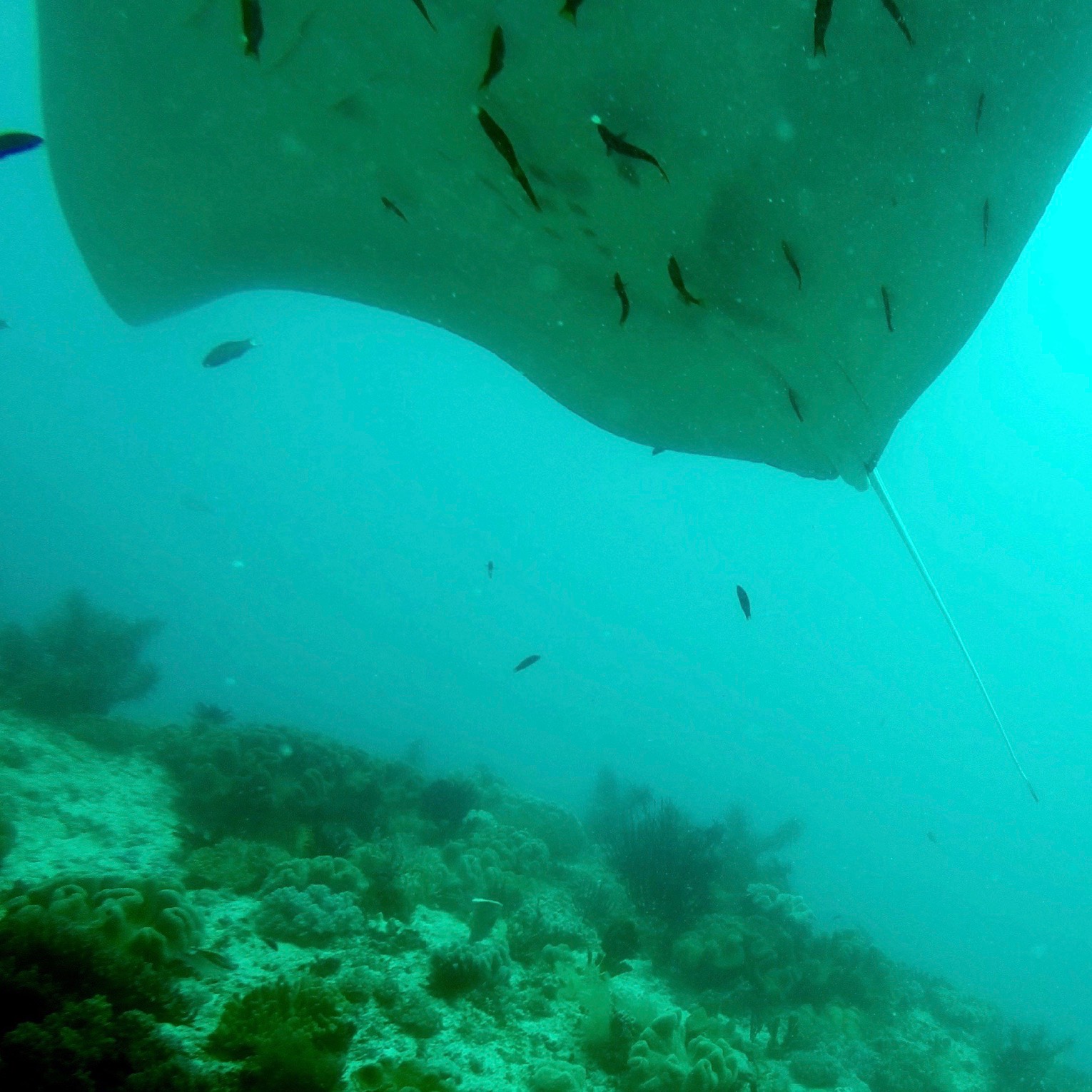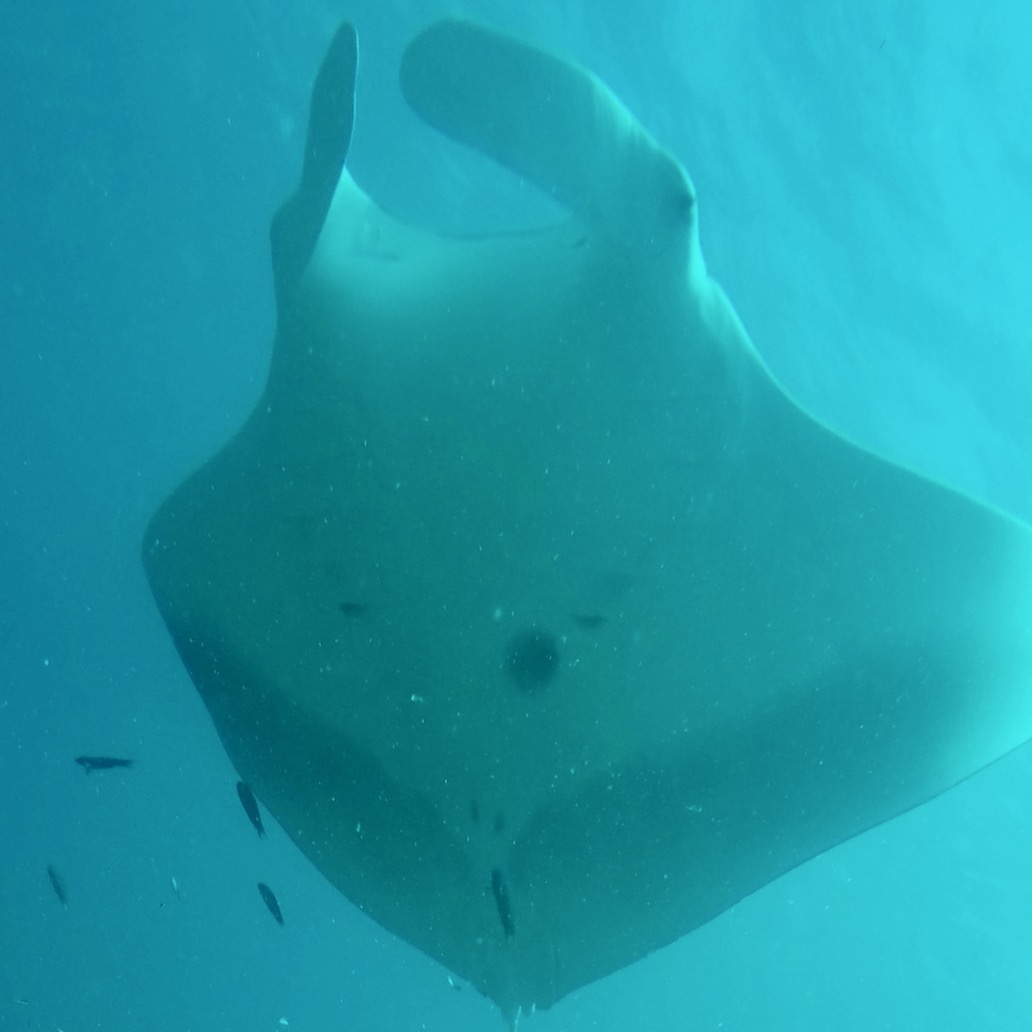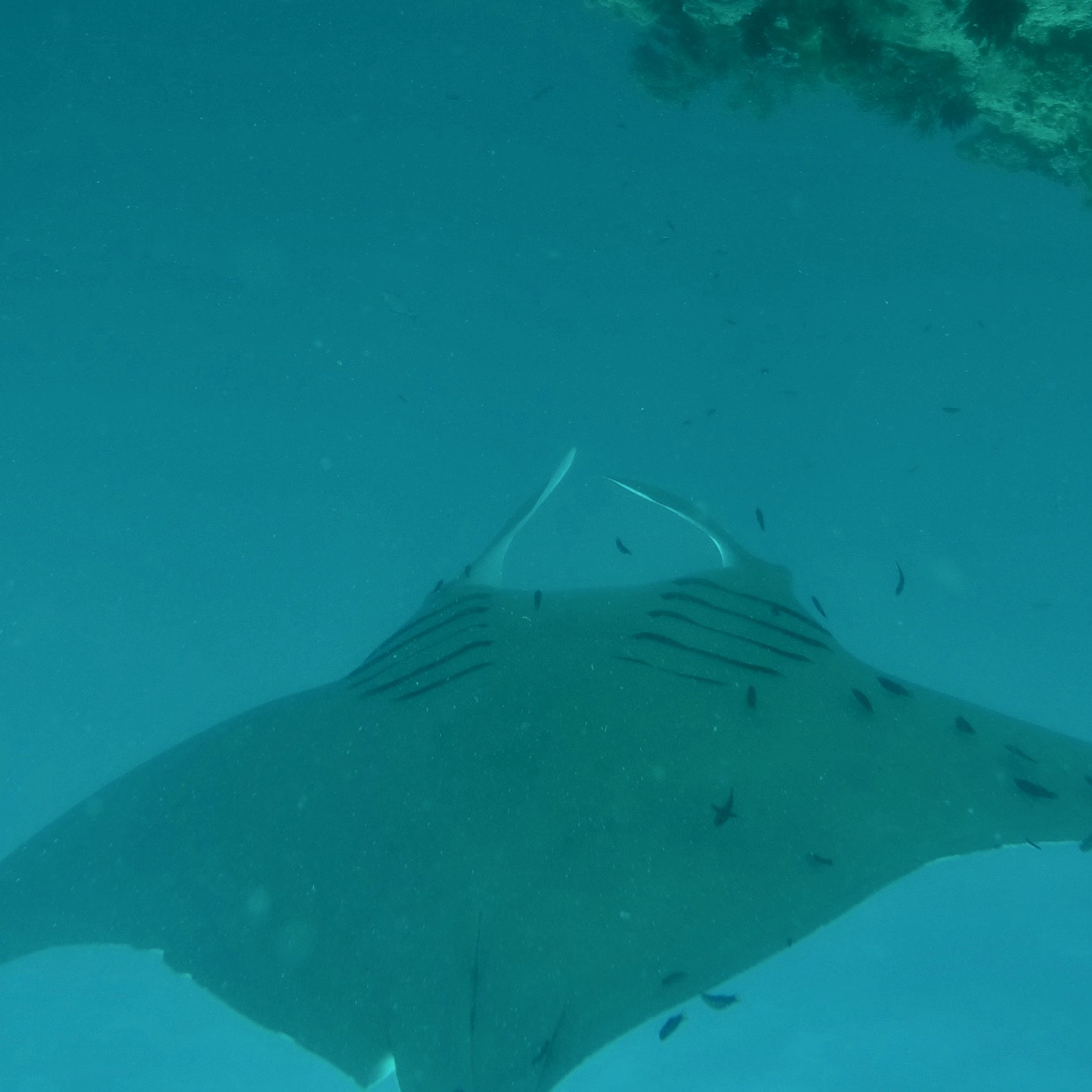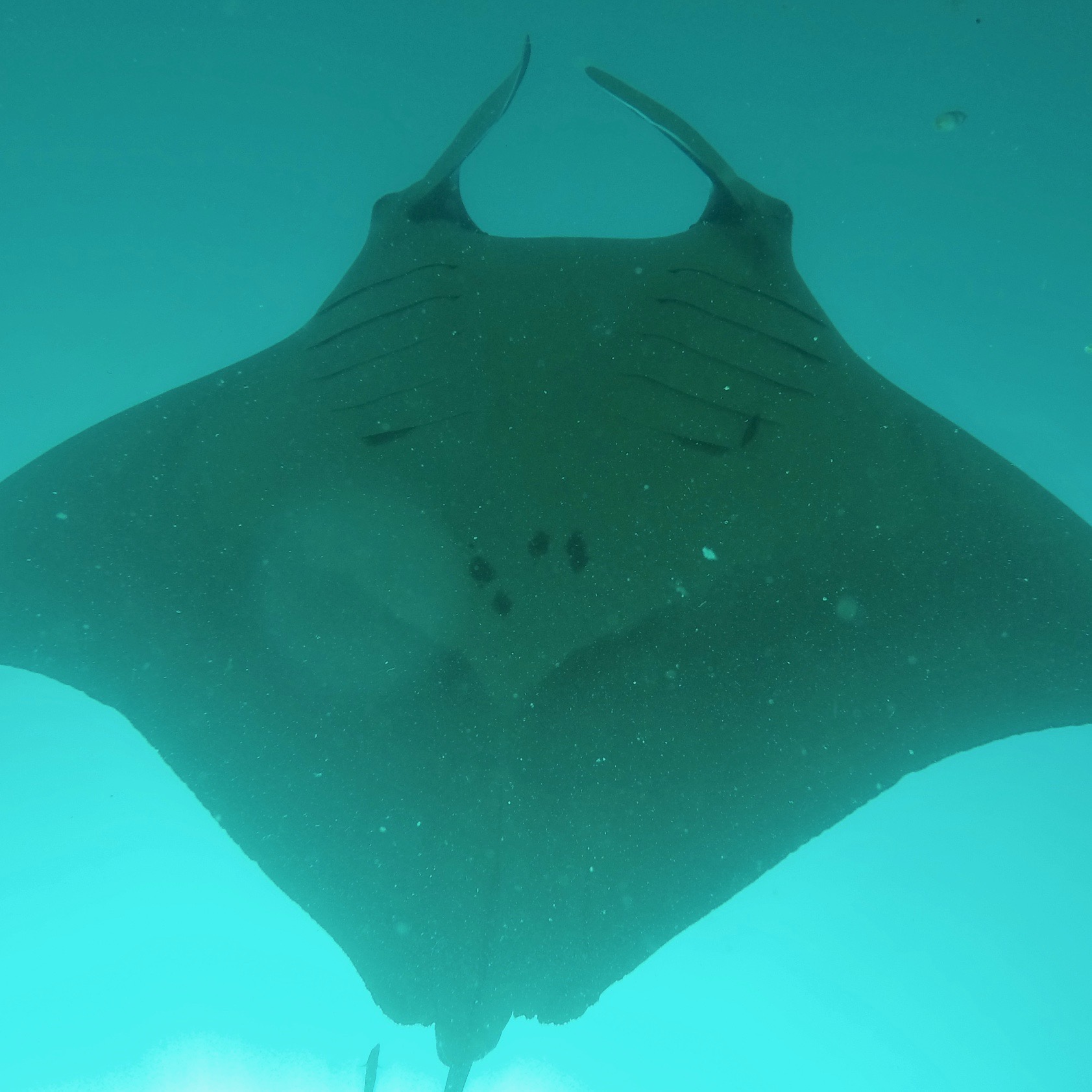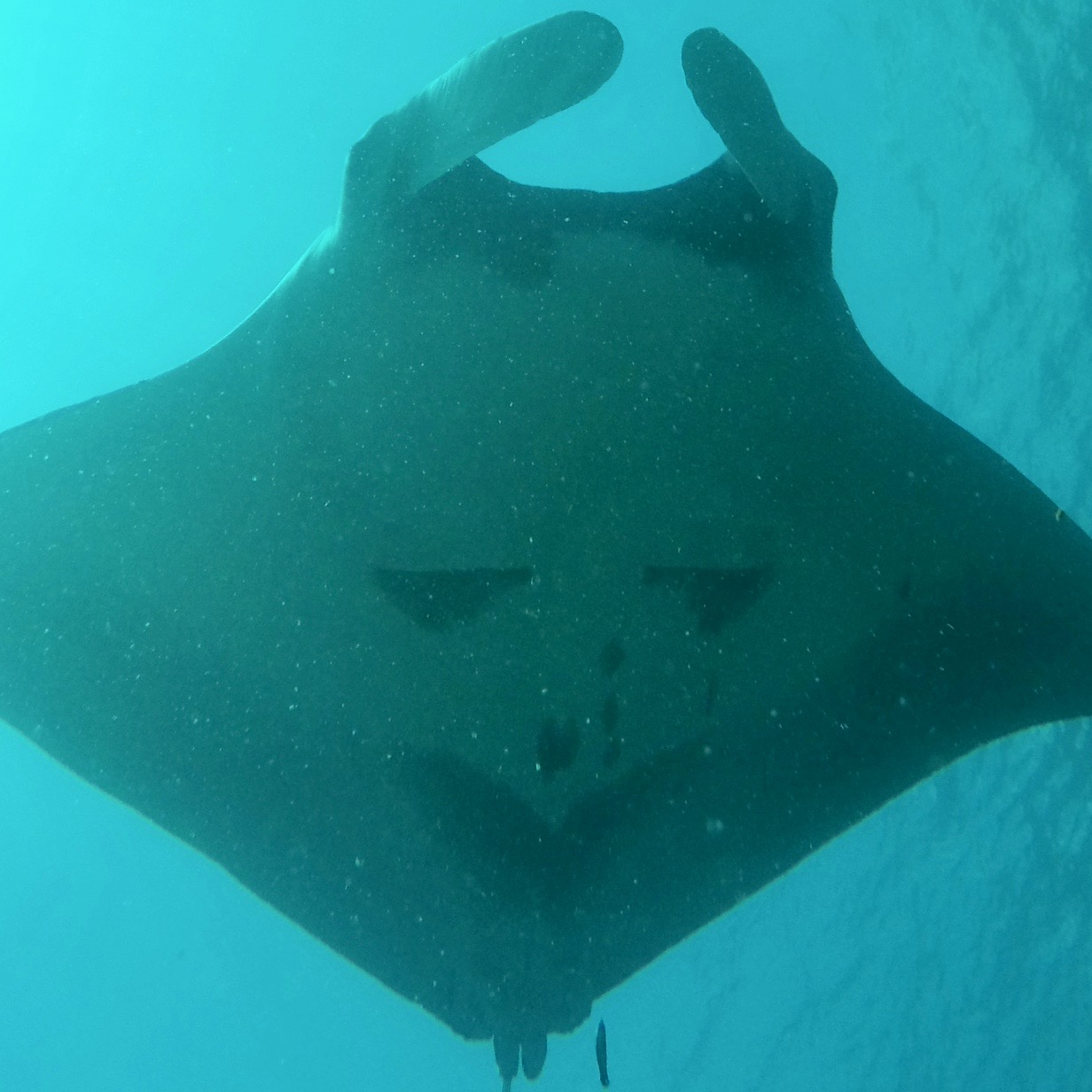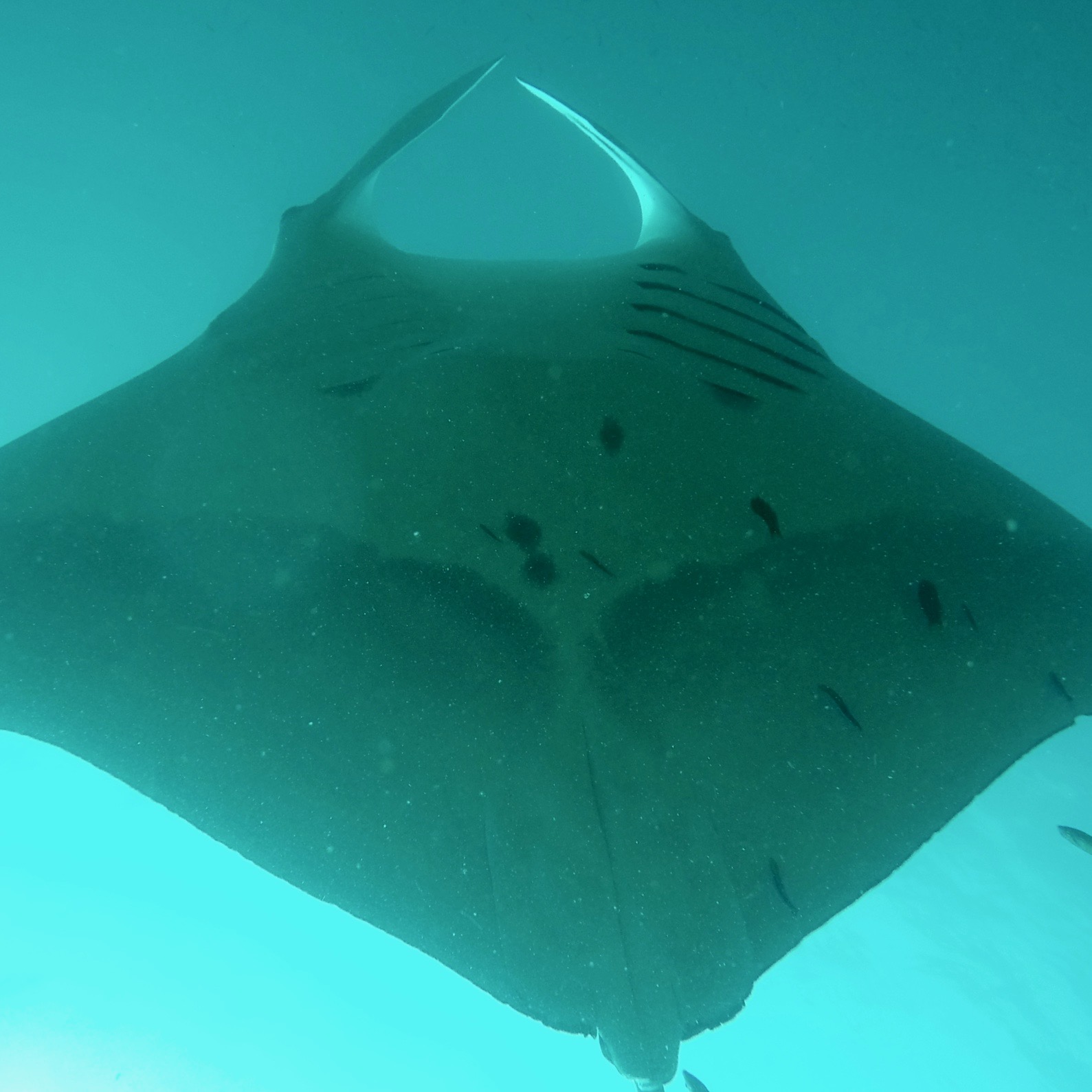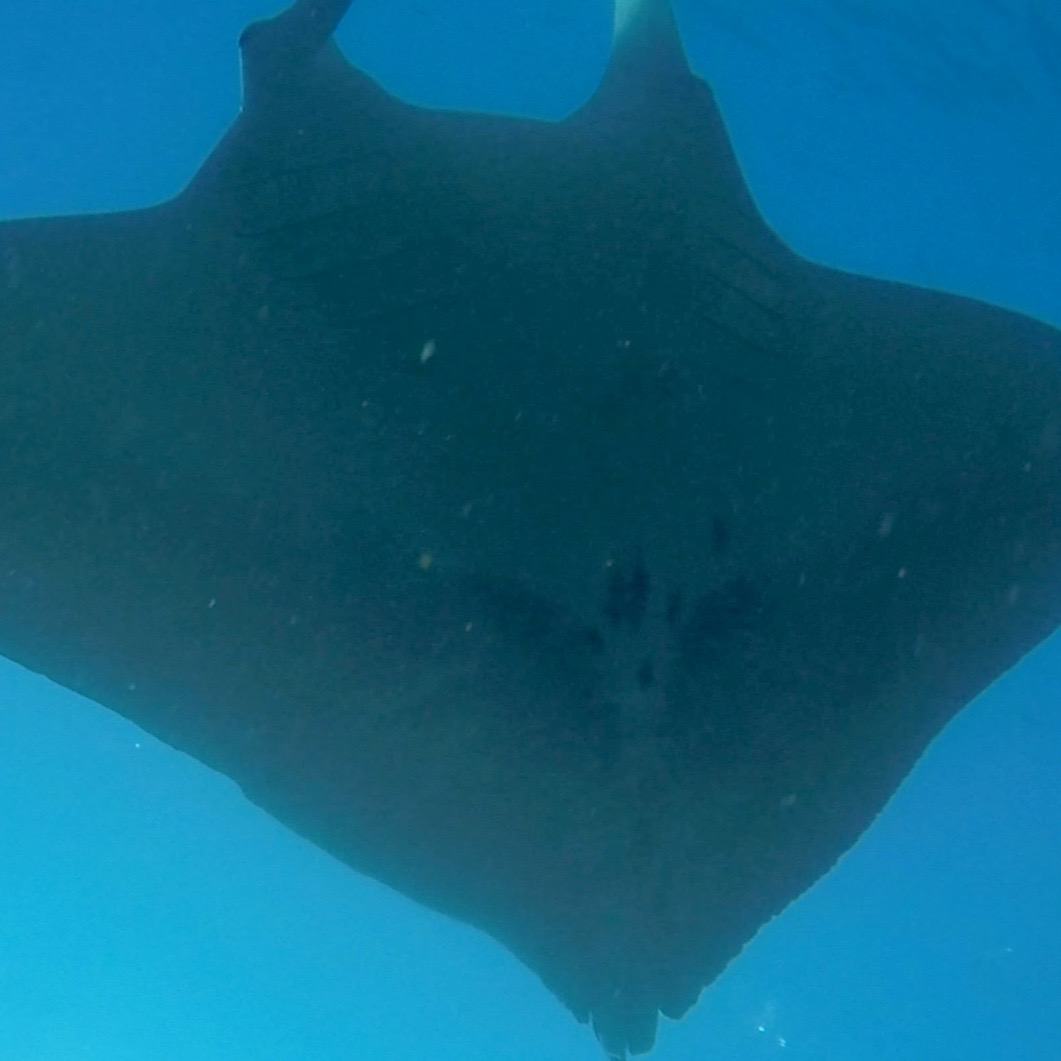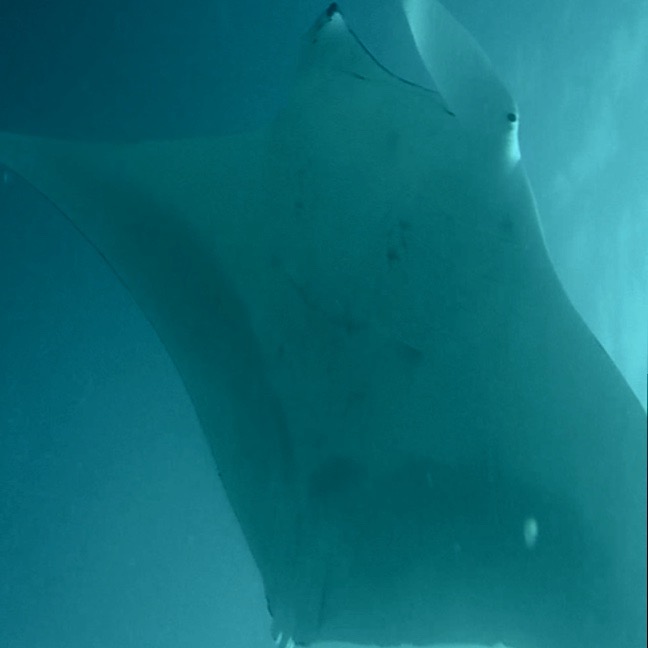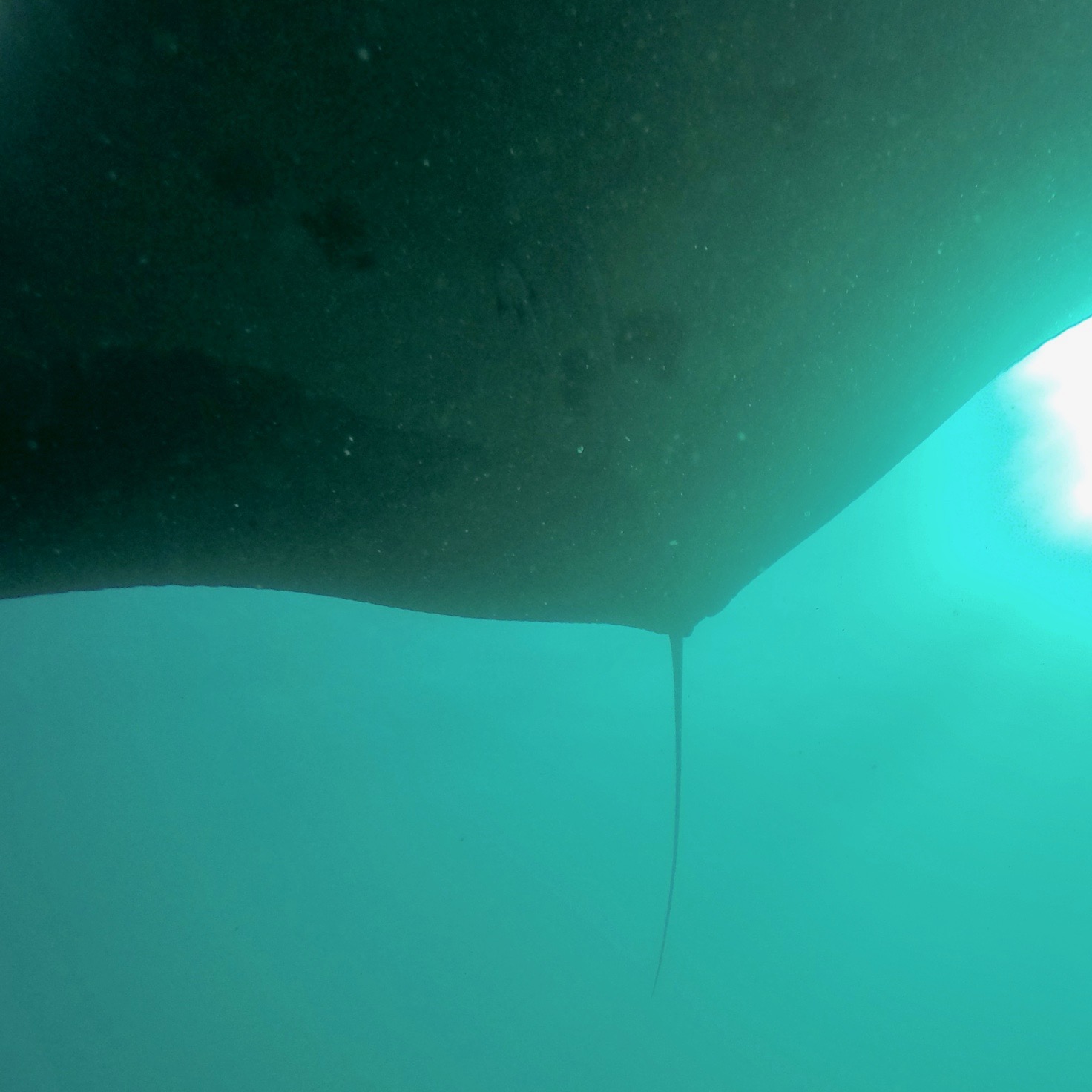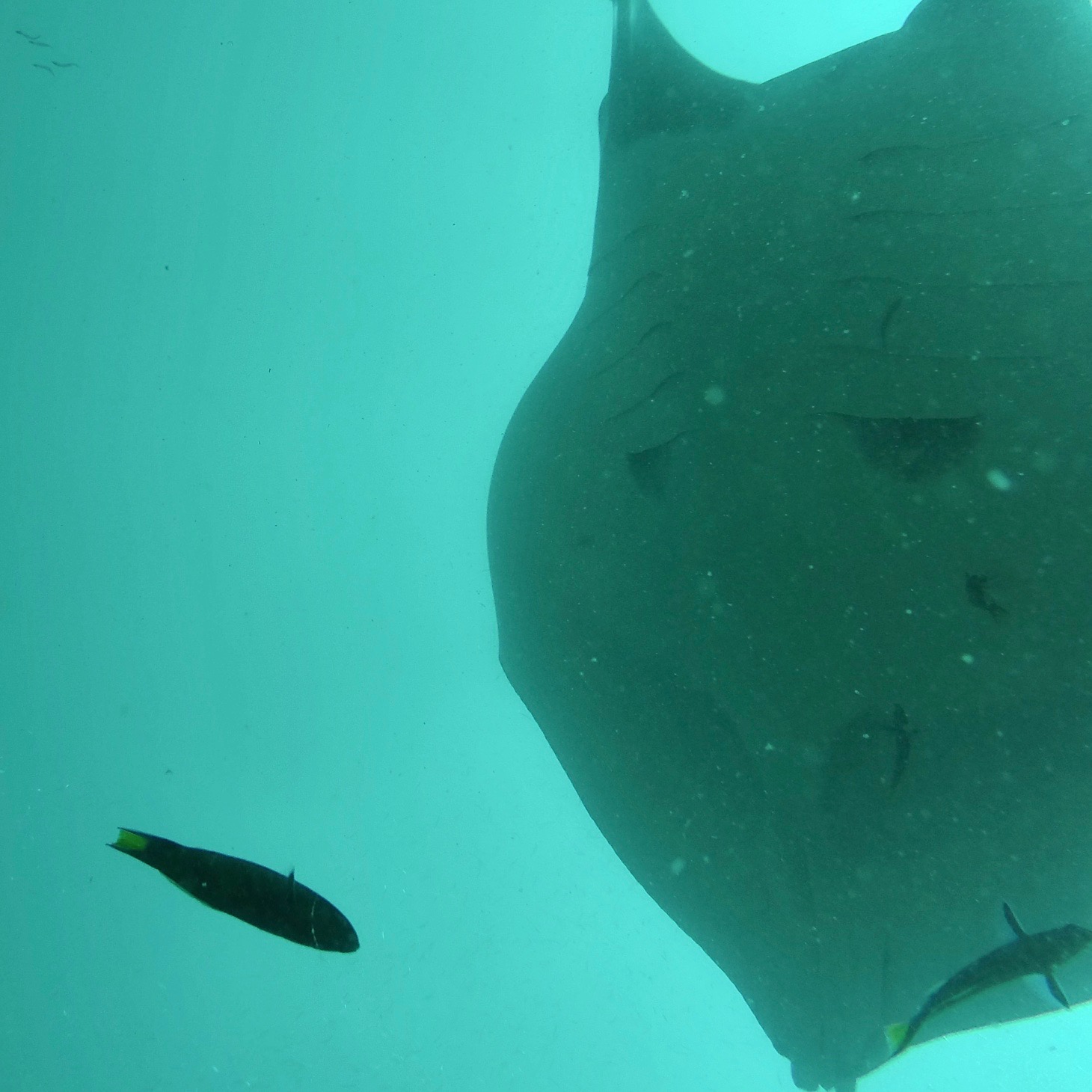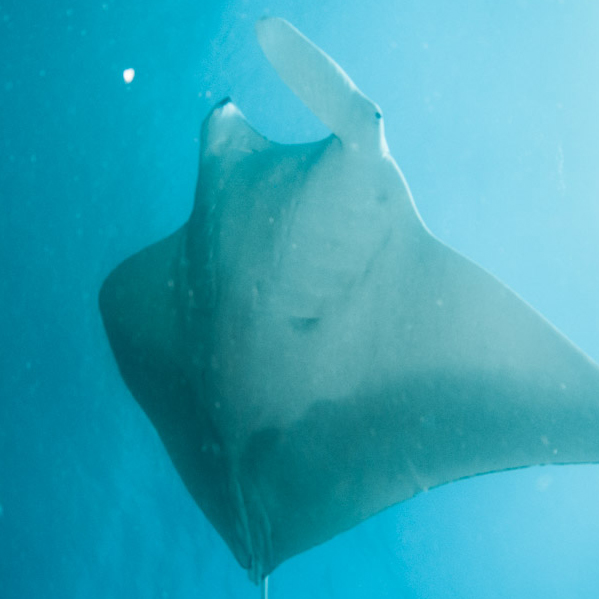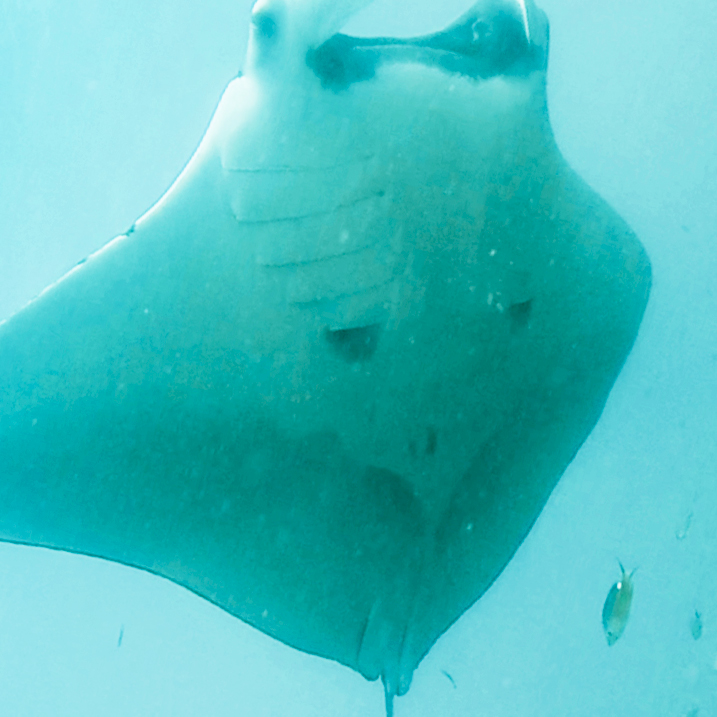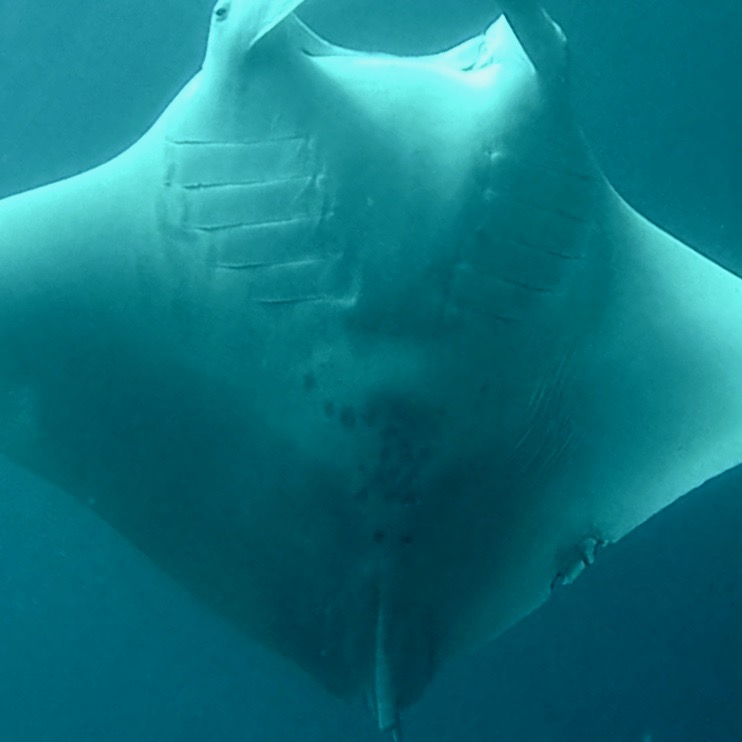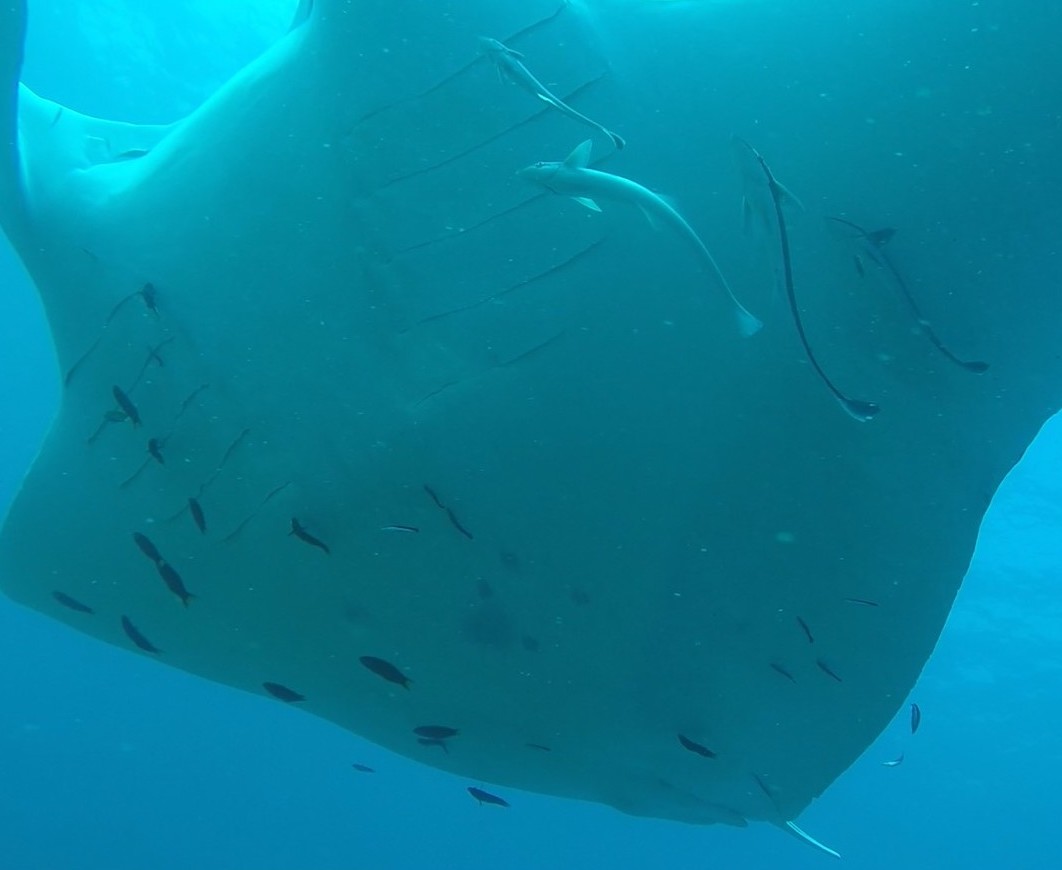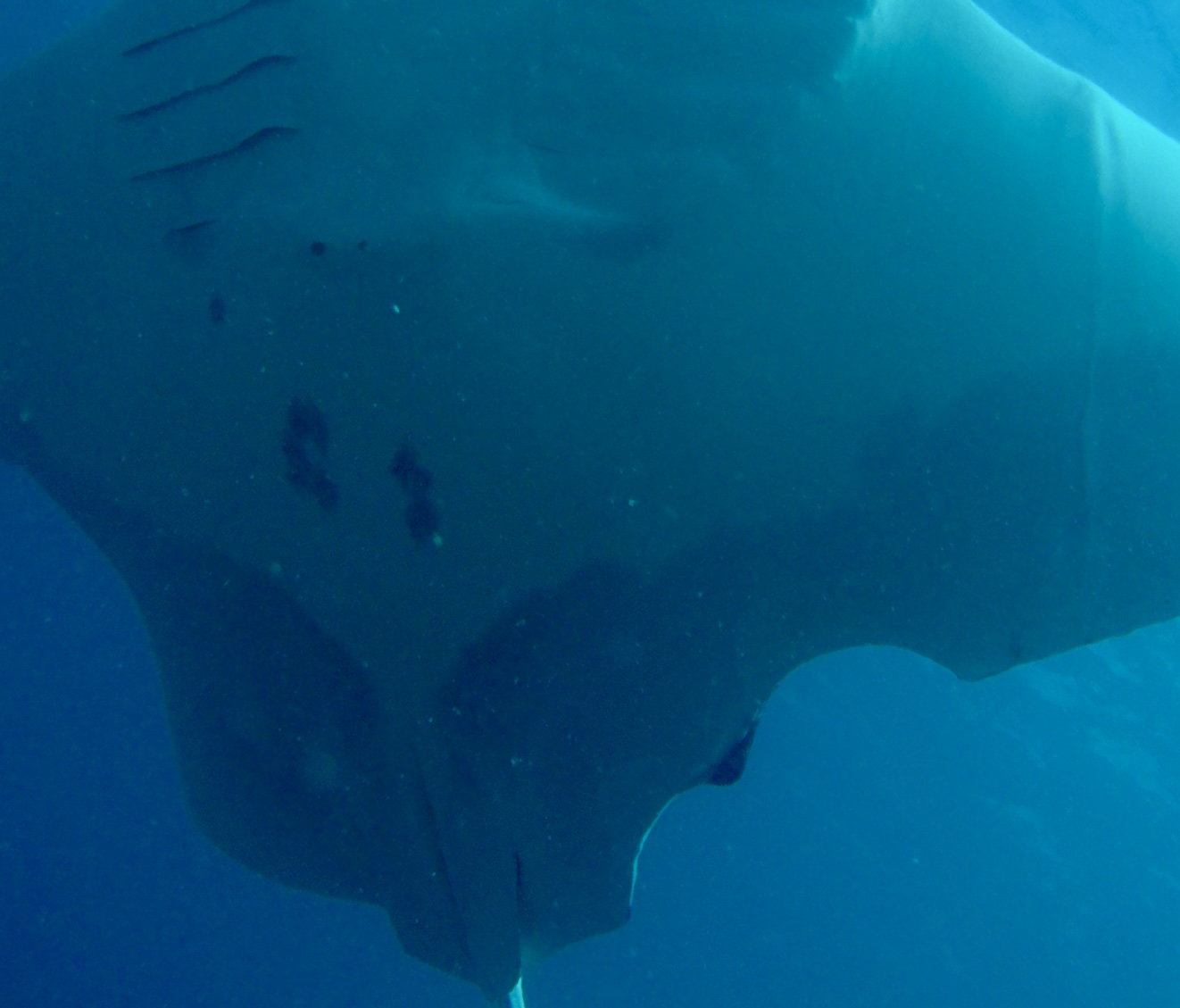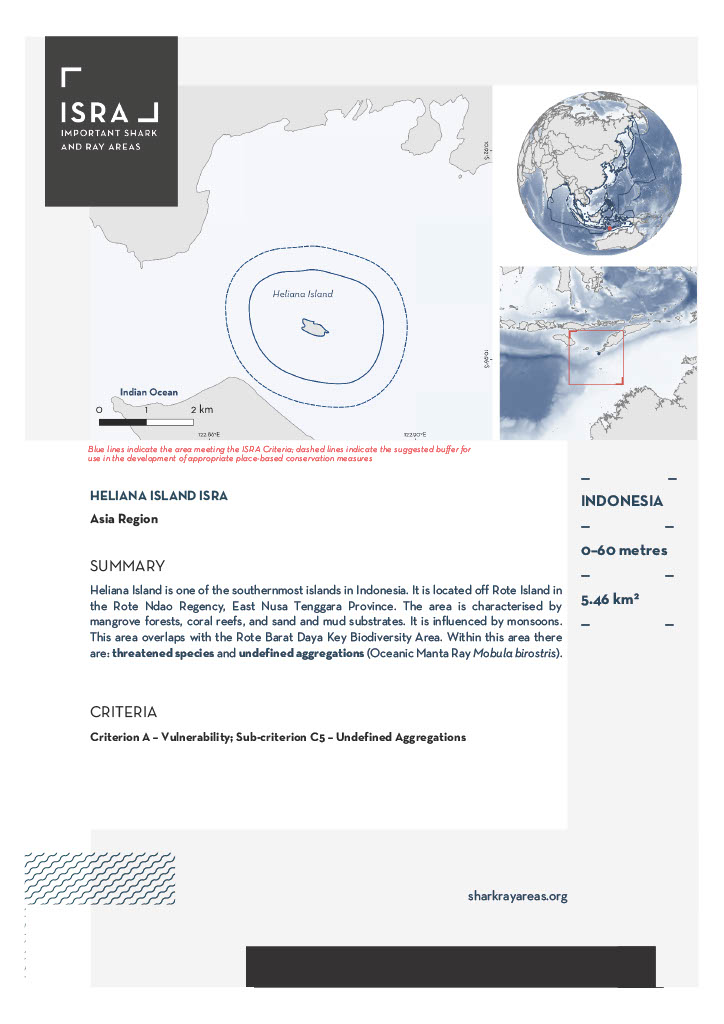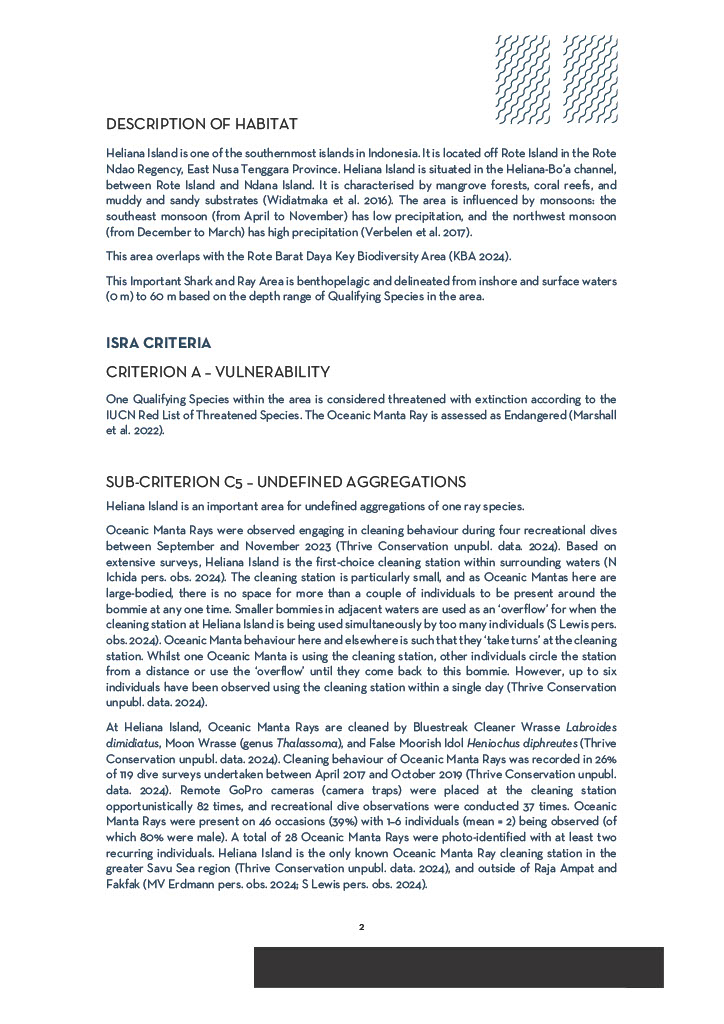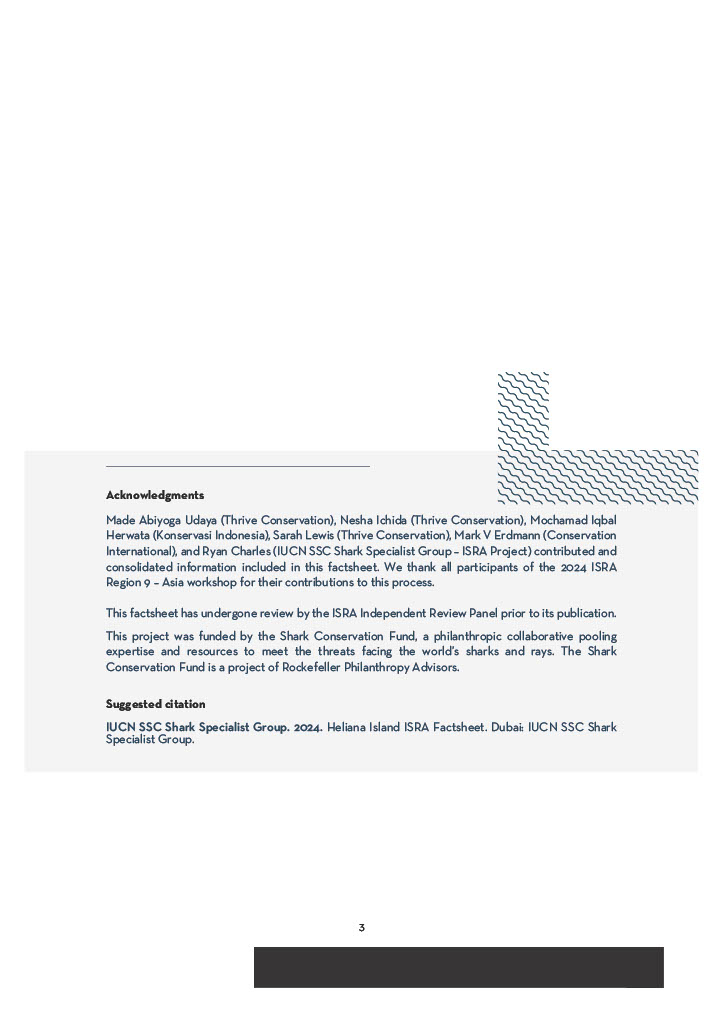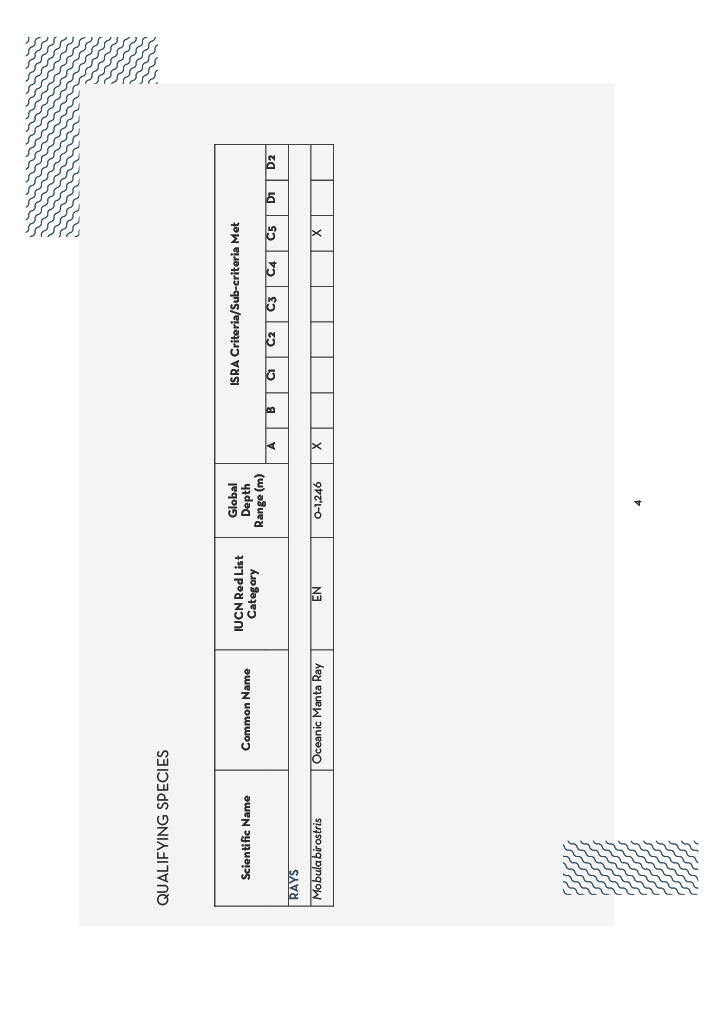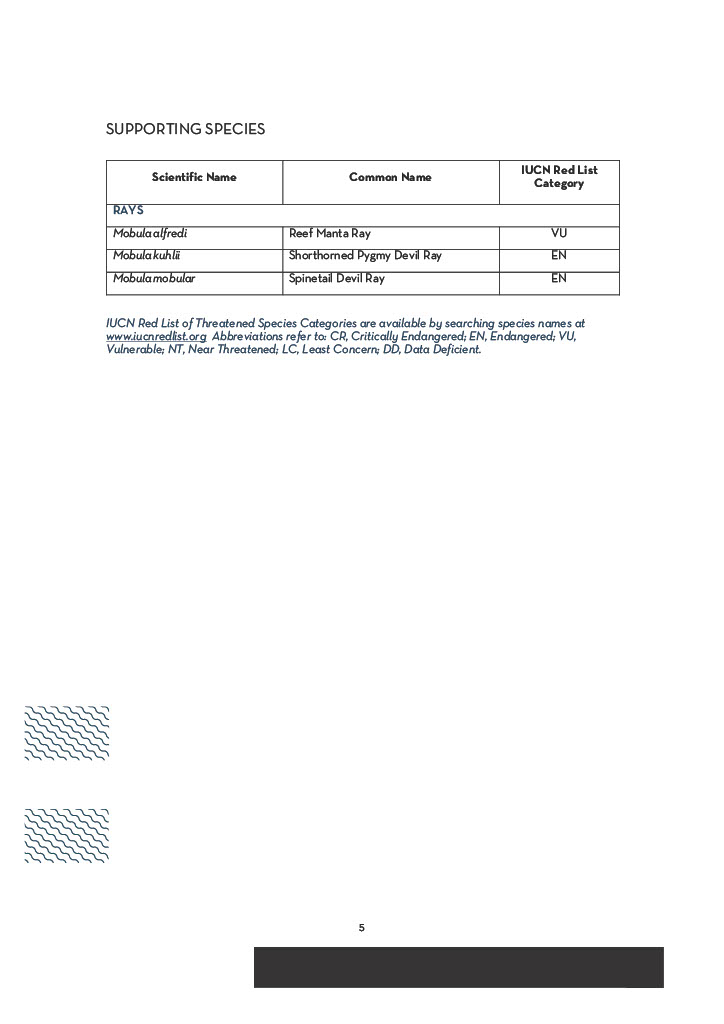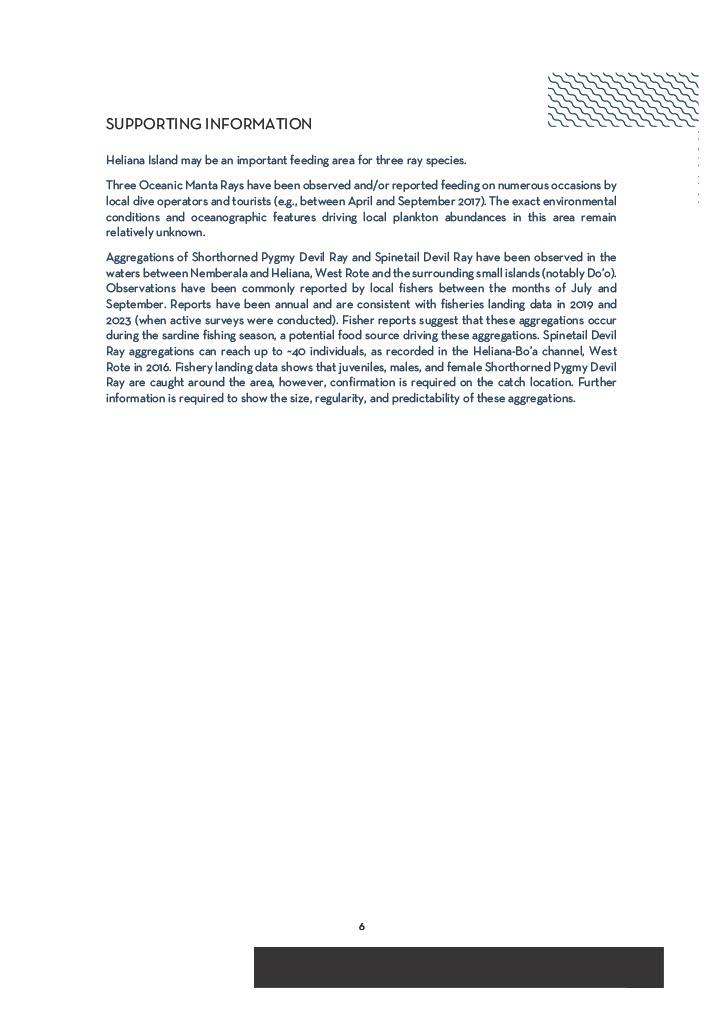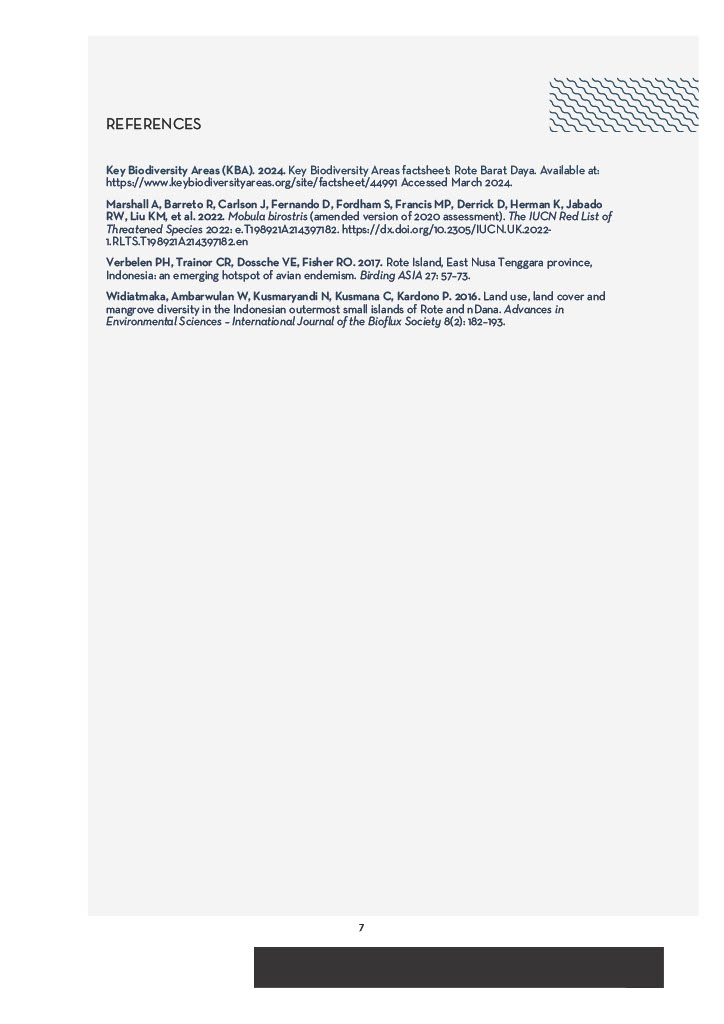Heliana Island Designated an Important Shark and Ray Area (ISRA)
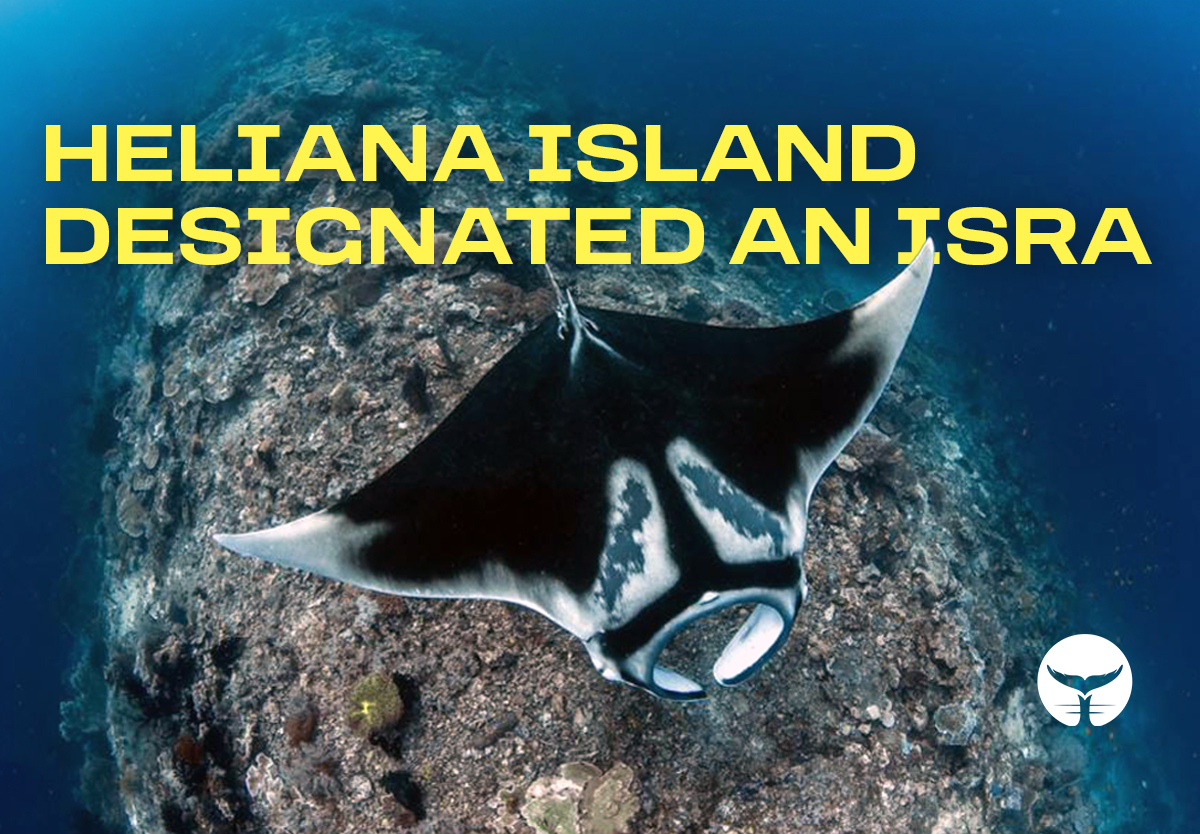
Heliana Island is one of Indonesia’s southernmost islands. Measuring 5.46 square kilometres, this area features a range of ecosystems and habitats, including coral reefs and sandy shores. It is situated in the Heliana-Bo’a channel, off Rote Island in the Rote Ndao Regency, East Nusa Tenggara Province.
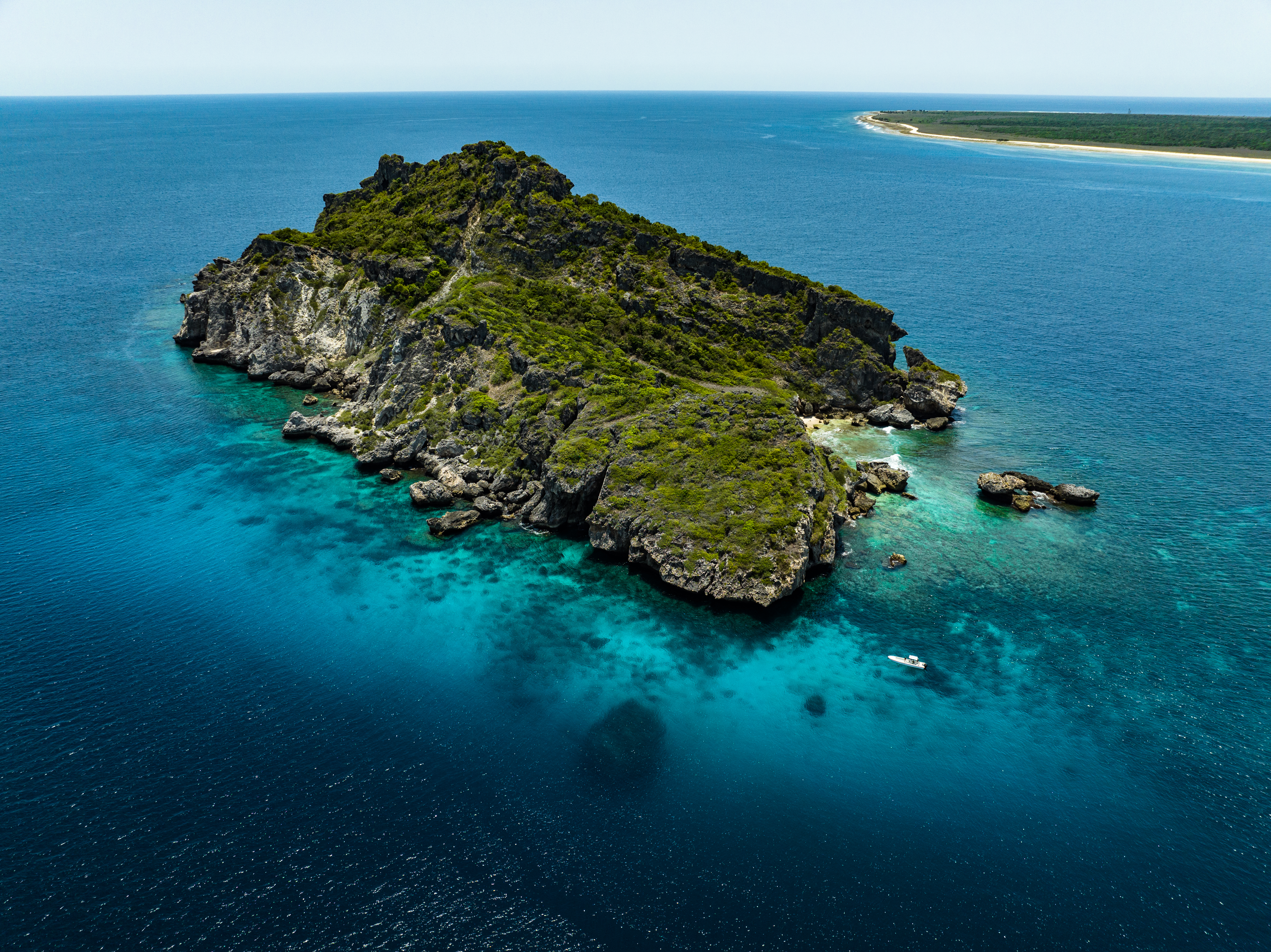
Aerial view of Heliana Island, with Ndana Island in the background. Photo by Mark Erdmann.
Since 2015, Thrive Conservation has been conducting frequent research and conservation of sharks and rays around Rote Island, including Heliana. This started with the Indonesian Manta Project, and subsequently morphed into the Rote Project sometime in 2019. As far as our team is aware, we were the first to explore the biodiversity around Heliana.
Extensive underwater surveys at Heliana commenced in 2017 and since then, our team uncovered aggregations of oceanic manta rays (Mobula birostris) at the site. They have been observed to use the bommie as their primary cleaning station. Between April 2017 and October 2019, our team undertook 119 dive surveys here, including 82 to deploy camera traps and 37 other recreational dive observations. Out of all of them, we encountered oceanic mantas on 46 dives (39%) and recorded cleaning behaviour during 31 dives (26%).
The frequency of oceanic manta encounters at Heliana allowed our team an in-depth look at their cleaning behaviours. We noticed that, similar to elsewhere, the oceanic mantas here exhibited turn-taking behaviour. For instance, when the cleaning station was occupied, other individuals would circle the station from a distance before returning to the main bommie. Because the main bommie at Heliana is particularly small and thus providing limited spaced for multiple large-bodied oceanic mantas simultaneously, smaller bommies in adjacent waters were observed to be used as overflows when too many individuals were present. We also observed that individuals were cleaned by a variety of fish species, including bluestreak cleaner wrasse (Labroides dimidiatus), moon wrasse (Thalassoma lunare) and false moorish idols (Heniochus diphreutes).
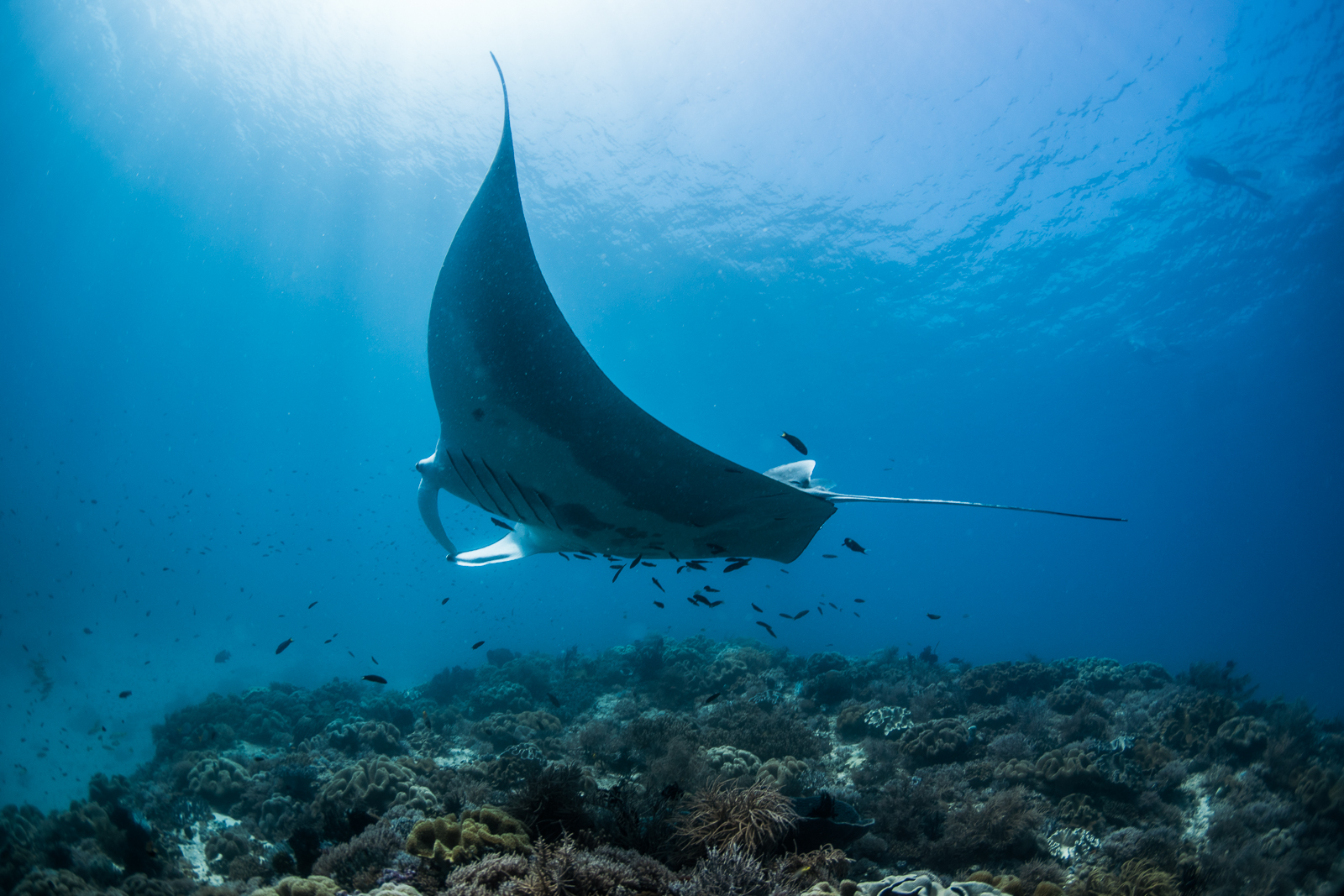
An oceanic manta cleaning at Heliana. Photo by Sarah Lewis.
As it currently stands, Heliana remains the only known cleaning station for oceanic mantas in the greater Savu Sea region, and outside of Raja Ampat and Fakfak. Over the past 8 years of our work around Rote, we have managed to identify, catalogue and regularly monitor at least 28 individual oceanic manta rays from Heliana:
Catalogue of oceanic manta rays identified from Heliana. Photos by Thrive Conservation.
In October 2023, our team likewise conducted a dive survey at Heliana and encountered a young, curious male individual with a wingspan of roughly 3.5 metres. By comparing the spot patterning around his ventral surface with those of existing individuals, we concluded that this was indeed the first time the individual had been encountered. Christened Krishna, he became the 28th and latest individual to be identified and catalogued in our ever-growing database.
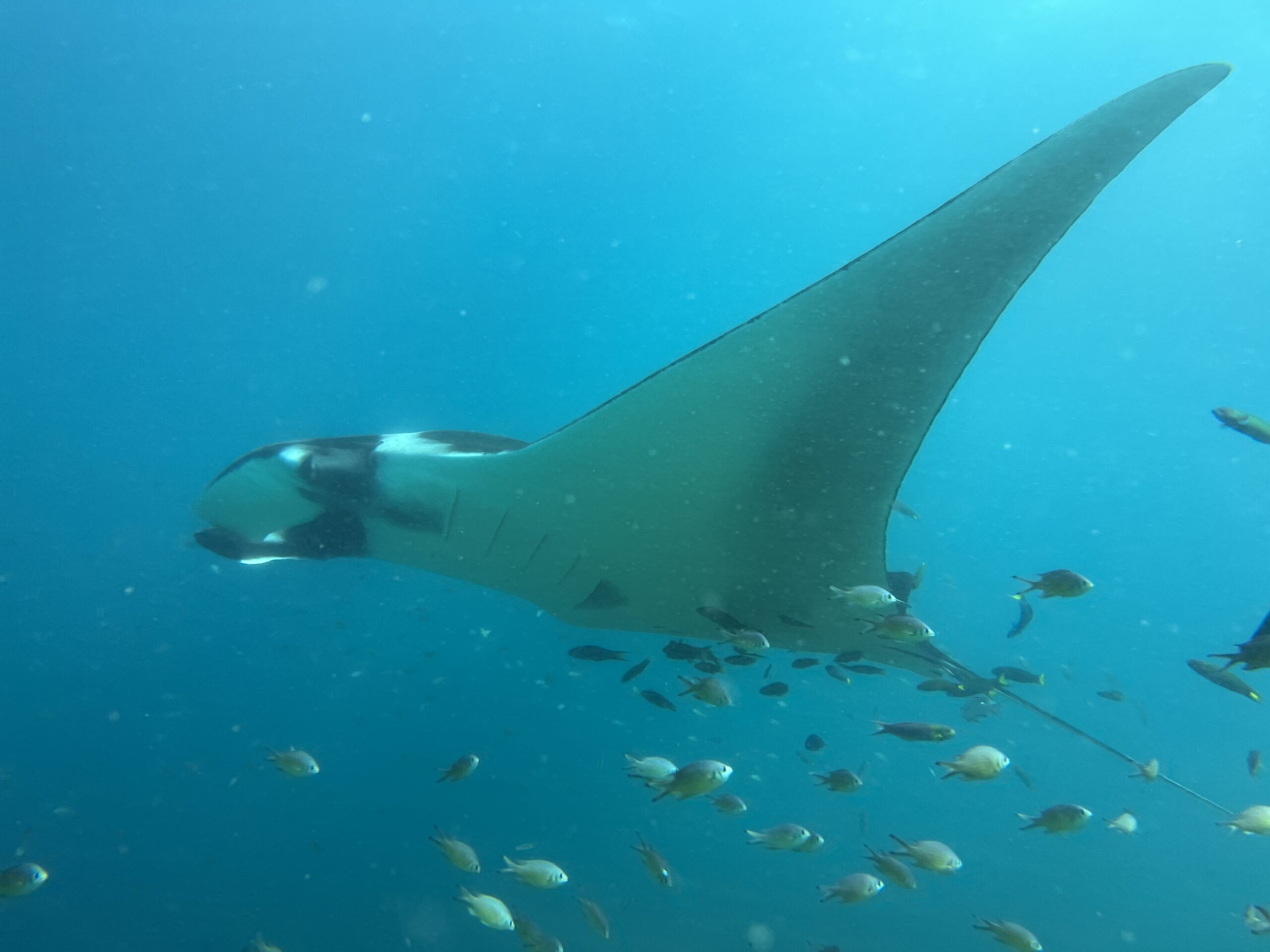
Krishna, the 28th and latest oceanic manta identified from Heliana. Photo by Nesha Ichida.
With the trove of data and expertise amassed over the years, our team led a proposal for Heliana Island to be designated an important shark and ray area or ISRA. The ISRA project was introduced by the IUCN SSC Shark Specialist Group, with the following in mind:
ISRAs are “discrete, three-dimensional portions of habitat, important for one or more shark species, that are delineated and have the potential to be managed for conservation”.
The identification of ISRAs is an evidence-driven, purely biocentric process based on the application of ad hoc scientific criteria supported by the best available science. This makes the ISRA identification process completely independent from political pressure. Any relevant management implication can only be subsequent to, and detached from, the ISRA identification process.
Candidate ISRAs may qualify for ISRA status if they satisfy any one of four criteria (or sub-criteria), including A: Vulnerability, B: Range Restricted, C: Life-History and D: Special Attributes. See here for an in-depth explanation on the approach taken by the review panel to designate ISRAs. Our proposal was based on Criterion A: Vulnerability and Sub-criterion C5: Undefined Aggregations. Oceanic manta rays are currently classified by the IUCN Red List of Threatened Species as Endangered. As such, they are regarded as a qualifying species, which evidences Heliana’s vulnerability. The use of the site as a cleaning station by more than one individual at a time (we have observed anywhere between 1-6 individuals present at once) also highlights Heliana’s importance for undefined aggregations of oceanic mantas.
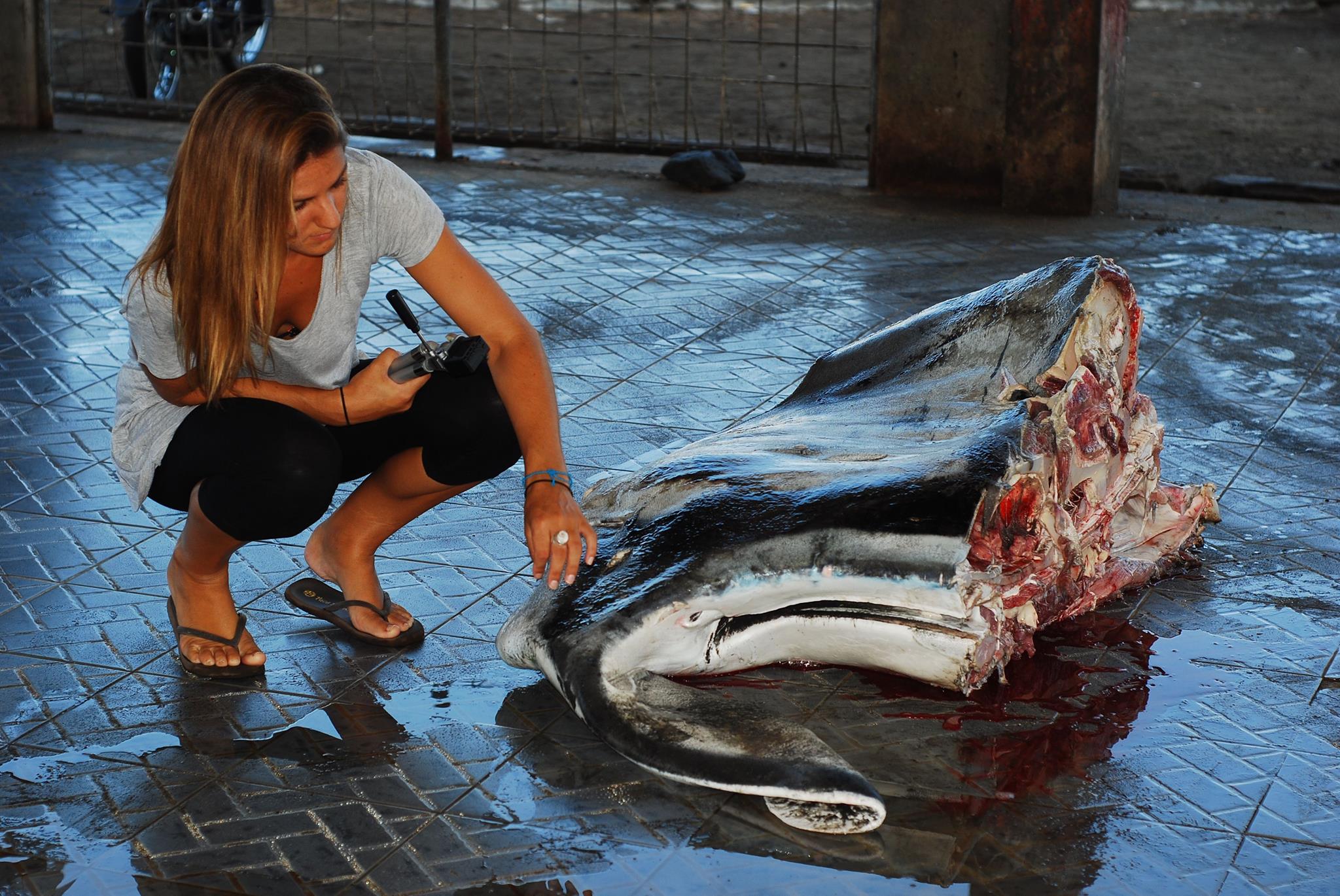
A close inspection of a dead manta ray. Photo by Sarah Lewis.
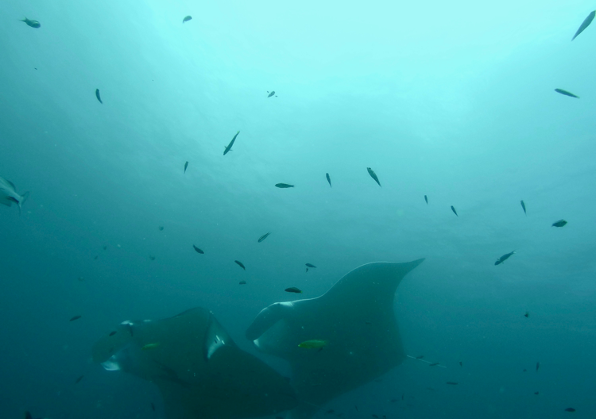
An interesting co-occurrence of a reef manta (Mobula alfredi) and oceanic manta (M. birostris) cleaning at Heliana. Photo by Nesha Ichida.
We are pleased to announce that our application had been successful, leading Heliana Island to be officially designated as an Important Shark and Ray Area as of 2024. Even as we celebrate this first-step, we are reminded that this is really just the beginning. As noted, ISRAs are not Marine Protected Areas (MPAs). The latter are delimited spaces where “…specific regulations are enforced to ensure that human behaviour is controlled so that the negative effects of such behaviour on the conservation of the target species can be avoided or mitigated”. Conversely, ISRAs are “only identified based on scientific criteria that describe their importance for the survival and well-being of one or more shark species found there” and on their own, they do not come with any form of regulation.
Nevertheless, we do hope that Heliana’s designation will attract the attention of government entities and policy-makers and raise the need for increased protection of the vulnerable ecosystems and biodiversity in Heliana and the greater Rote region. As remarked by Made Abiyoga (Research and Conservation Officer, Thrive Conservation) who spearheaded the team’s effort for Heliana’s ISRA status:
“The designation of Heliana Island as an ISRA will hopefully illuminate the ecological significance of the greater Rote region and strengthen research and conservation in this part of the world.”
Our team, comprising Made Abiyoga, Nesha Ichida and Sarah Lewis, would like to express our gratitude to the following individuals who helped make this possible: Mochamad Iqbal Herwata (Konservasi Indonesia), Dr. Mark Erdmann (Conservation International) and Ryan Charles (IUCN SSC Shark Specialist Group – ISRA Project). Presenting the official factsheet for Heliana Island ISRA:

